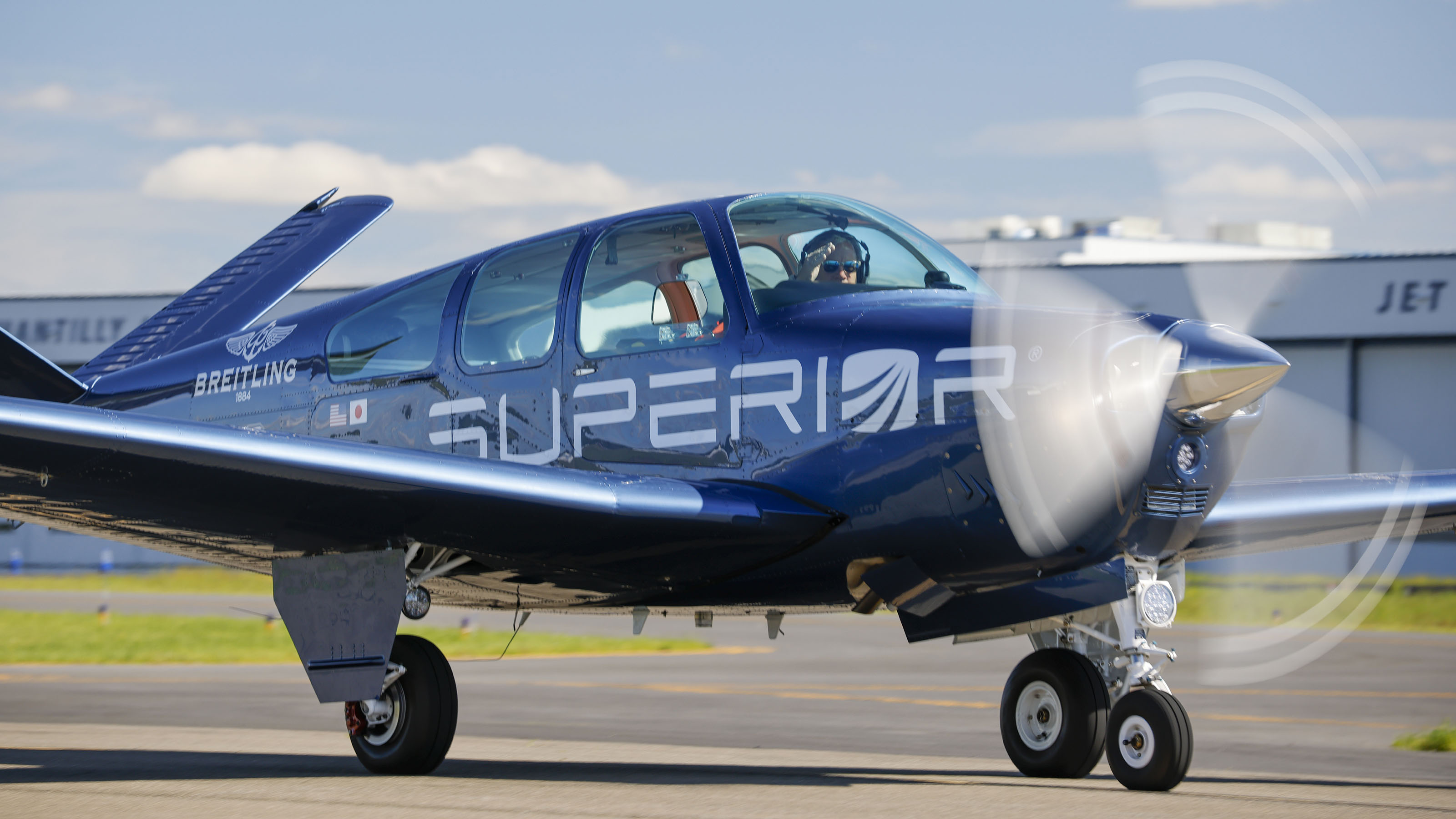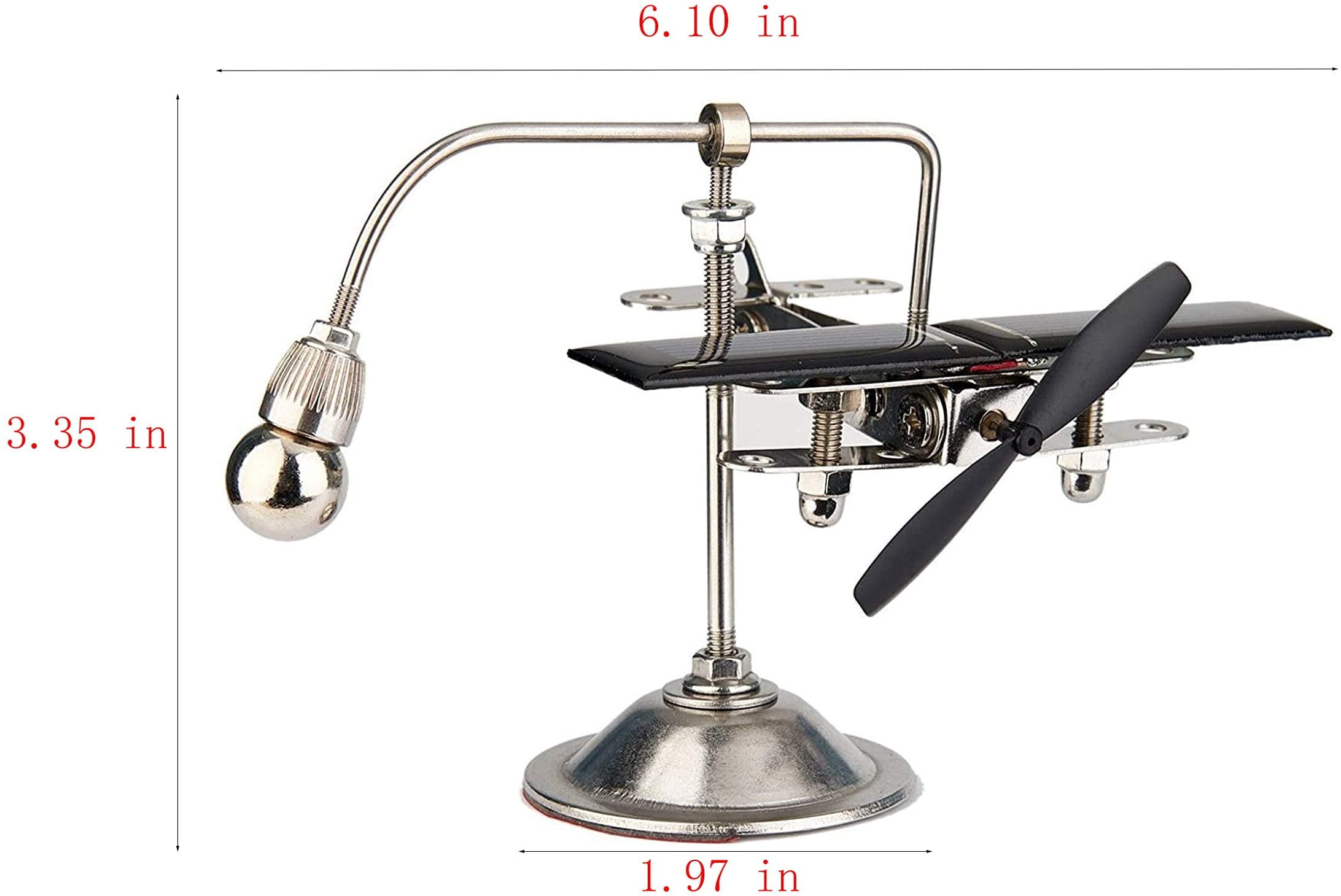Aircraft Propeller Balancing Service - The nature of the propeller causes vibration. Some vibration is unavoidable, but unbalanced propellers can cause problems for both aircraft and pilots. A small correction to offset the propeller can dramatically reduce vibration around the aircraft. Double M Aviation provides detailed and reliable propeller balance.
The lower the plane's vibration, the longer the plane and its components will last. Additionally, excessive vibration can cause pilot fatigue, which can make the flying experience at least unpleasant, and at least dangerous. Excessive vibration can affect parts of the aircraft. Rivets or cracks in the cowling can be an indication of a problem with propeller vibration. Additionally, propellers must be balanced each time they are reinstalled on the aircraft after repair or maintenance. This is the case when the propeller is most likely out of balance, and could benefit from inspection and adjustment.
Aircraft Propeller Balancing Service

Pilots may not always feel or hear the vibration, so they may increase the vibration without realizing it. Vibration can come from a statically unbalanced propeller, where one blade weighs more than the other, or from a dynamically unbalanced propeller, where something else in the plane affects how the propeller works. Let Double M Aviation take the guesswork out of diagnosing Propeller Failure.
Universal Magnetic Suspension Propeller Prop Balancer For Multi Rotors, Quadcopter, Hexcopter, Tarot, Airplane, Helicopter
Mike Naab and Mike Bowen have worked on all the planes I have. He recently transformed my B-55 Baron from a 1970's round dial aircraft into a state of the art aircraft for the 21st century. This was made possible by the state of the art facilities at KLAL and the associated service network. Double M can and will provide a "no excuse" solution. After being an Aircraft Engineering customer for many years, I couldn't imagine a better experience. Double M far exceeded my experience there!
Contact us to discuss our commitment to improving aircraft safety and reliability through quality maintenance. Do you need an order? We are available by phone at 863-940-3450, or you can email us at Info@. We can't wait to see you take to the skies! Feeling a little groggy when you fly (and tired when you land)? You may not be nervous; but more the side effect of excessive vibration. Vibration can come from an aircraft's engine, propeller or spinner, and if left unchecked, it can cause other mechanical problems. Vibration can also cause pilot and passenger fatigue. Fortunately, computerized dynamic propeller balancing is a cost-effective route to help reduce those pesky vibrations.
Airplane propellers are made to be durable, strong and able to absorb the stress of flight. Depending on the model, the propeller blades weigh anywhere from a few ounces to a few pounds. The speed of rotation and the aerodynamic loads exerted during flight on the propeller make it susceptible to vibration if there is even the slightest imbalance.
Regardless of its source, excessive vibration can cause a number of problems. Engine vibration isolators are designed to filter out most of the vibrations transmitted to the aircraft, but not eliminate them all.
Lord Looks To Extend Emea Presence
An unbalanced propeller that causes the engine to vibrate when installed will wear out the vibration isolator. Cracks in the fuselage can form as a result of excessive shaking. Cracks can also form in the cowling itself, and in the spinner or spinner bulkhead.
Vibration can cause exhaust connections to crack or loosen. As an illustration of the importance of balance when it comes to the exhaust system, the PowerFlow exhaust actually requires a dynamic vane balance for the exhaust system to qualify for a full warranty.
Not only that. Vibration is very hard on engine components and can cause premature engine wear. In addition to creating mechanical problems, vibration is also a source of pilot stress and fatigue.

The frequency at which the vibration occurs gives a clue as to whether the vibration is caused by the propeller itself or the engine.
Dynavibe Blog About Aviation And Vibration Analysis
The vibration is calculated by the number of vibrations per revolution (of the propeller). This is called "two each", "half each" and so on. One vibration is present in each revolution of the propeller and refers to the propeller itself, or in rare cases the crankshaft of the engine. Half of each vibration occurs in every other propeller revolution and is usually caused by cylinder damage. Small vibrations that occur at a frequency greater than once per revolution (two per revolution or more) usually indicate bearing wear or a malfunction in an accessory such as an alternator.
As mentioned above, vibration can come from sources other than the propeller. Engines and engine mounts may be at fault.
A compression imbalance or a cylinder with too little compression can cause vibration. Excessive wear on the crankshaft counterweights can also cause vibration.
Worn engine vibration isolators allow excessive vibration, and can allow the front of the engine to tilt down.
Aircraft Maintenance: What A Difference A Prop Makes
Spinners that have heavy seats due to manufacturing or repair defects can cause slight imbalances that produce vibrations. Placing the spinner on a flat table and rotating it a little can sometimes reveal a heavy spot on the spinner. If the spinner comes to rest with the same place at the bottom every time it probably has a heavy place. A spinner with a heavy post can make the dynamic balance of the propeller difficult.
The forward tip of the spinner must be aligned with the center of rotation of the propeller. If the nose of the spinner appears to wobble when observed by an onlooker looking out of the plane as the machine is operated, the spinner must be realigned by loosening the mounting screws and tightening the new one as the spinner is held firmly.
A cracked or damaged spinner baffle can also cause the spinner to wobble. It is a good idea to check carefully if there are any defects.
Vibrations originating from propellers are usually caused by mass imbalance. Mass imbalance is when the center of gravity of the propeller is not in the same place as the center of rotation of the propeller. It is usually caused by removing material from the blade to repair nicks or by varying degrees of erosion of the blade. Fortunately, this can often be remedied by balancing the propeller and checking for proper blade track and indexing.
Aircraft Propeller Balancing
Aircraft propellers are statically balanced during manufacture and in the propeller shop. Static balancing is the process of checking the weight of the hub and blades for uniform distribution. This ensures that the propeller is not subject to twisting or bending due to heavy areas on either the blade or the hub.
During static balancing, the propeller is mounted on a mandrel that rests on a low-friction bearing so that the propeller rotates freely, with a minimum amount of force required to move it. (See photo 01, page 26.)
When the propeller is turned slightly, it must remain in the new position without returning or continuing to turn. The process is similar to balancing a wheel assembly.
If the imbalance is in the propeller or hub, the heavy area causes the propeller to rotate so that the heavy point ends up at the bottom.
Certified Faa Repair Station In Springfield Mo
Some shops mount the propeller in a horizontal plane above the shaft which has an indicator suspended rigidly from the bottom of the shaft on which it is mounted. (See photo 02, page 26.)
When the propeller is turned, if the indicator below the shaft tilts to one side instead of maintaining a vertical position, the propeller has a heavy seat.
Weight can be added or subtracted to the hub to statically balance the propeller. (See photo 03, page 26.)

The static balance is initially adjusted on the propeller assembly and fine-tuned after the propeller has been assembled and painted. Propellers with de-icing ("hot props") are set after all anti-icing boots are installed.
Why Is Aircraft Propeller Static Balancing Important?
After the propeller is statically balanced and installed in the aircraft, the path of each blade must be checked. Blade Track shows the path that each blade tip travels. In a perfect propeller, the track will be the same.
The track is checked by placing a solid object next to the propeller blade near the edge so that the propeller blade is free to roll over, and marking exactly where each blade tip passes the object. There should not be more than 1/16 inch in the gap between the rails.
The plane had to be choked so it wouldn't move and the propeller had to be slightly pushed into the engine as each blade was checked to remove endplay from the thrust bearing in the engine. A blade that is out of track causes an aerodynamic imbalance because the angle of attack will be different from the other blade or blades. Also, different blade tracks can indicate that the propeller has been damaged in some way
The propeller index indicates the location on the crankshaft flange where the propeller is mounted. Engine and aircraft manufacturers specify where the propeller should be mounted on the crankshaft flange with the cylinder piston No. 1 in top dead center.
Aircraft Propeller Maintenance
Aircraft propeller static balancing, dynamic propeller balancing equipment, propeller aircraft, aircraft propeller balancing equipment, aircraft propeller service llc, aircraft propeller repair service, aircraft propeller service, aircraft propeller balancing, propeller balancing, aircraft propeller service near me, aircraft propeller balancing near me, aircraft propeller service wheeling il
0 Comments